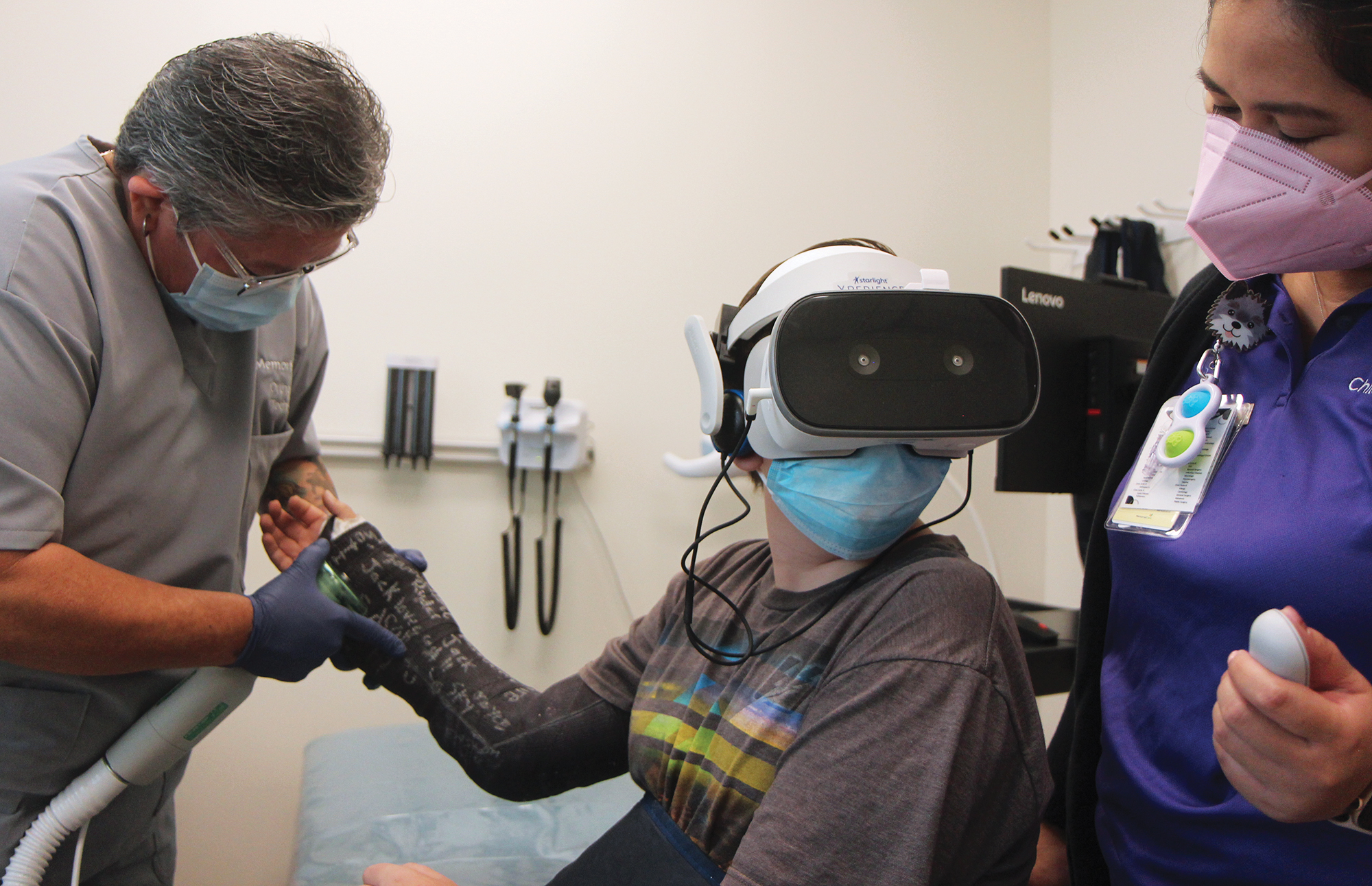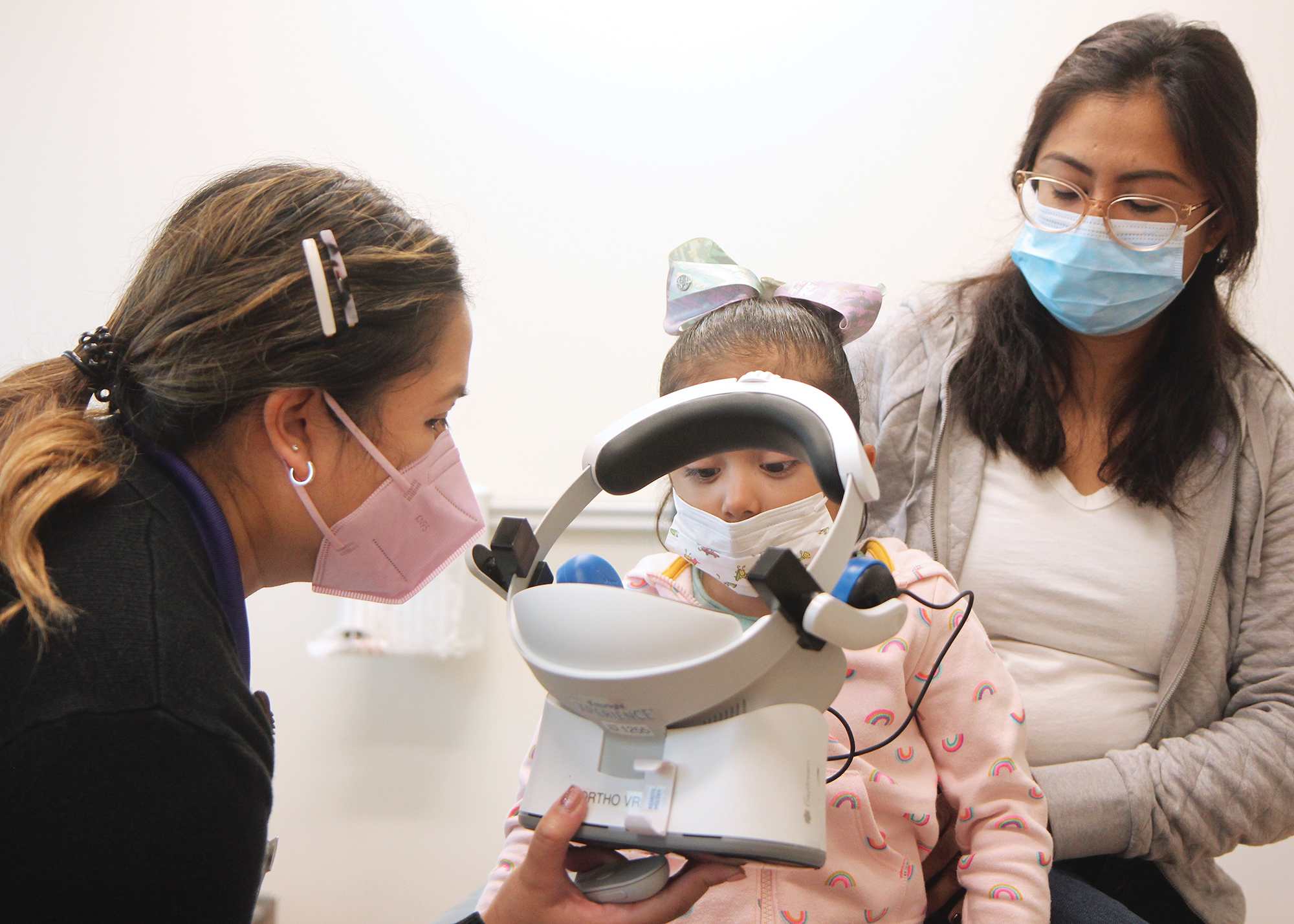
Medical procedures as seemingly innocuous as a cast removal can be stressful for young children and even teens, according to medical experts. So to alleviate—or at the very least distract from—some of that stress, staff at Long Beach Memorial Medical Center’s campus have turned to virtual reality.
“Kids need more than medicine. We normalize the environment for pediatric patients, usually through play,” said Rita Goshert, director of Memorial’s child life program. “Our role is to help comfort and distract patients during uncomfortable or anxiety-producing procedures.”
About five years ago, Miller Children’s & Women’s Hospital Long Beach received its first set of VR goggles in partnership with the Starlight Children’s Foundation, Goshert said, adding that child life programs often don’t have funding for purchases as pricey as VR goggles.
The technology is not new. Virtual reality headsets first hit the scene in the early- to mid-1990s through video game companies, including Sega and Nintendo. Next-generation VR was released in the 2010s in the form of the Oculus Rift and a few others, but the tech still has not taken off on a large scale due to cost, size and setup complications, according to video game reporter Kevin Webb.
But for basic functions, such as simple scenes for the duration of short medical procedures, the technology in its current form will suffice.
“They’ve evolved over time,” Goshert said of the last five years of use. “It was kind of trial and error of what went well and what didn’t.”
Today, the campus has five VR headsets—all donated by Starlight—each with 12 scenes and interactive games, according to spokeswoman Beatrice Jimenez. Scenes include space and swimming with turtles and other sea life. The goggles are full-immersion and include headphones to drown out sound.

The scenes and games have been vetted by pediatric physicians and child life specialists who have expertise in child development, Goshert said.
The goggles are used during a variety of medical procedures in various departments, including cast removal, lumbar punctures, bone marrow tests, blood drawing, chemotherapy and more, Goshert said. Pain is not the only discomfort children and teens face during these procedures, she added.
“Having a cast removed, people think it’s no big deal,” Goshert said. “The sound of the cast cutter can actually be very scary for a child.”
Goshert recalled a time her 15-year-old daughter visited the hospital to have a cast removed from her leg. When the cutter turned on, Goshert said her daughter was visibly nervous and distressed. So the staff pulled out the goggles.
“She was really getting into it and then forgot what was going on,” Goshert said. “I got to see firsthand as a mom that it truly does work.”
While staff does not want any patient to have uncomfortable or negative memories associated with the hospital, Goshert said it’s especially important for patients who require frequent visits. She said staff are not only charged with handling the patient’s physical medical care but also their mental health.
While Memorial may not have pioneered the use of VR in the clinical setting, Goshert said the hospital is definitely an early adopter. As with most things, the medical field has been slow in adopting VR, she said, adding that anything “new” takes time before it becomes the norm in the medical world.
To help expedite the use of VR in more clinical settings, Carol Cunningham, a family nurse practitioner at Memorial’s orthopedic clinic, is working on a research project on the use of VR during cast and pin removal. Cunningham is in the process of getting institutional review board approval, so patient data collection has not begun, Jimenez said.
“I really believe having the research to back it up is really what we need more of—there’s a little bit out there, but not a lot,” Goshert said. “Research is key to really prove it’s working.”
Fully immersive distractions are not for all patients, however, Goshert said. Adaptation is key: Some patients can’t handle the headsets and instead are better distracted by games or movies on a tablet. And some patients simply are more comfortable watching the procedure, she added.
But for plenty of patients, VR has proven its worth.
“The ability to fully immerse them in this setting, whatever it is—swimming with dolphins or whatever—really takes them out of the clinical setting,” Goshert said. “It takes them out of the cast removal room to another place.”
